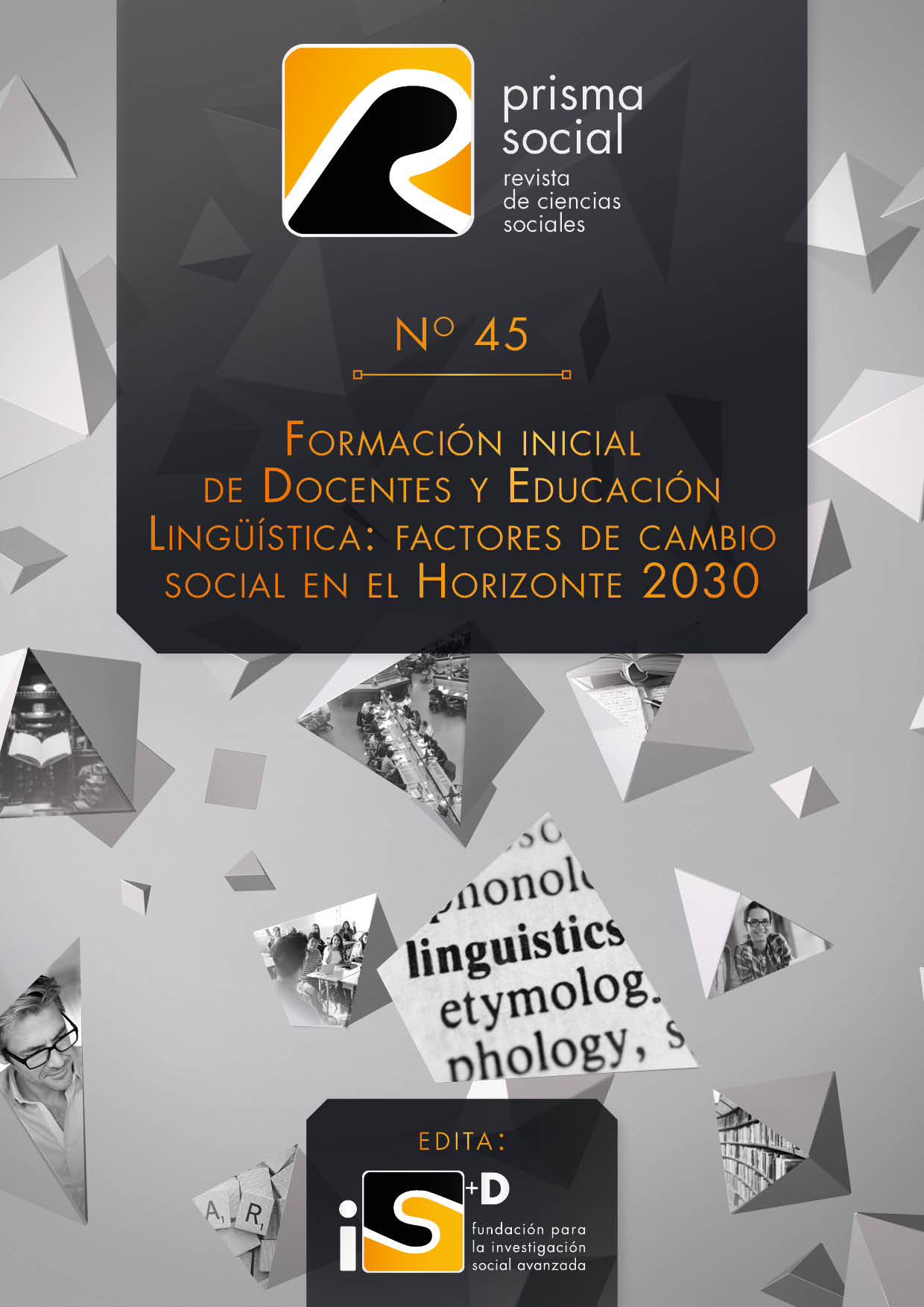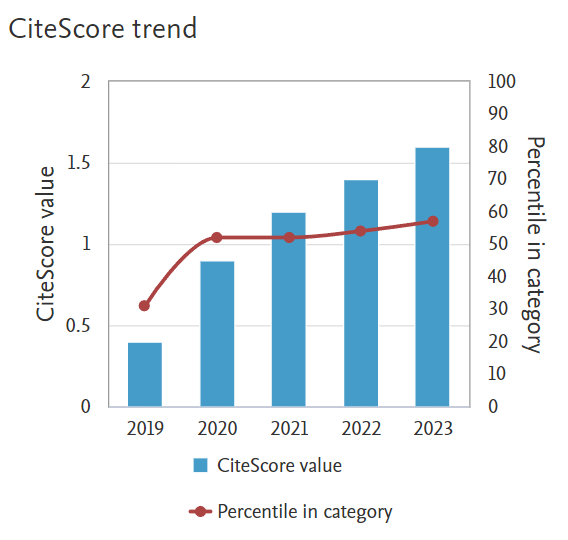Contribution of imprisonment to homelessness
A qualitative approach
Keywords:
homelessness, ex-carceration, exclusion, prison, support, homeAbstract
This article studies the real experiences of the previously incarcerated homeless population in the city of Valencia. After examining existing published national and international literature for the links between the phenomena of incarceration and homelessness, it established indicators that can measure the social exclusion resulting from their intersection. Following this, dichotomous variables were selected (length of imprisonment and the current category of homelessness) and a typological sample group of previously incarcerated and currently homeless population was formed. In-depth interviews focusing on the preestablished indicators were conducted with the group and in parallel, social professionals and/or experts who work with the affected population were also interviewed. Finally, using the Atlas.ti.23 programme, the adversities that the study’s target group faces were described and the impact that the length of the incarceration and the category of homelessness had on the group’s chances of social inclusion was analysed. This study also presents proposals to combat the resulting extreme social exclusion. In this sense, it highlights the importance of support programmes following prison release that are based, amongst other factors, on the provision of a home.
Downloads
References
Cabrera, P.J (2007). Exclusión social: contextos para un concepto. Revista de Treball Social, 180, 9-21 https://www.researchgate.net/publication/275957839_Exclusion_social_contextos_para_un_concepto
Cabrera, P. J., y Rubio, M. J. (2008). Las personas sin hogar, hoy. Revista del Ministerio de Trabajo e inmigración, 75, 51-74. https://www.researchgate.net/publication/28249079_Las_personas_sin_hogar_hoy
Covin, L. (2012). Homelessness, Poverty, and Incarceration: the criminalization of despair. Journal of Forensic Psychology Practice, 12 (5), 439-456. https://doi.org/10.1080/15228932.2012.713835
Cox, R., Lahey, J., Rhoades, H., Henwood, B., & Wenzel, S. (2021). Does the timing of incarceration impact the timing and duration of homelessness? Evidence from “The Transitions to Housing” study. Justice Quarterly, 38(6), 1070-1094. https://doi.org/10.1080/07418825.2019.1709883
De la Fuente-Roldán, N. (2023). La realidad conceptual del sinhogarismo. Reflexiones para un abordaje comprensivo. Cuadernos de Trabajo Social, 36 (1), 61-71. https://revistas.ucm.es/index.php/CUTS/article/view/81320/4564456562684
Enders-Dragässer, U. (2010). Women and homelessness in Germany. Homeless in Europe – Gender Perspectives on Homelessness. Spring 2010, 12-15.
FEANTSA (2005). ETHOS - European Typology on Homelessness and Housing Exclusion. https://www.feantsa.org/en/toolkit/2005/04/01/ethos-typology-on-homelessness-and-housing-exclusion
Herbert, C.W., Morenoff, J.D y Harding D.J, (2015). Homelessness and housing insecurity among former prisoners. RSF: The Russell Sage Foundation Journal of the Social Sciences, 1(2), 44-79. https://doi.org/10.7758/rsf.2015.1.2.04
Herrero, I. (2003). Mujeres sin hogar y violencia de género. La triple invisibilidad. Cuadernos de Trabajo Social, (16), 265-268.
Manzanos Bilbao, C. (2007). Violencia, salud y drogas en prisión. En: Cerezo Domínguez, A.I. y García, E. (2007). La prisión en España: una perspectiva criminológica. (pp. 135-156).
Manzanos Bilbao, C. (1998). Salir de prisión: la otra condena. Zerbitzuan Gizarte zerbitzuetarako aldizkaria / Revista de servicios sociales, 35, 64-35. http://www.zerbitzuan.net/documentos/zerbitzuan/Salir%20de%20prision.pdf
Manzanos Bilbao, C. (1991). Cárcel y marginación social: Contribución crítica e investigación aplicada a la sociedad vasca. (3º edición). Gakoa Luburuak
Martín-Crespo Blanco, C., y Salamanca Castro, A. B. (2007). El muestreo en la investigación cualitativa. NURE investigación: Revista Científica de enfermería, 27. https://www.nureinvestigacion.es/OJS/index.php/nure/article/view/340
Matamala Zamarro, E. (2019). Desactivar el sinhogarismo de larga duración: trayectorias vitales e intervención institucional. Investigación aplicada en la ciudad de Valencia. [Tesis doctoral, Universitat de Valencia]. RODERIC https://roderic.uv.es/bitstream/handle/10550/72552/sinhogarismo%20de%20larga%20duraci%c3%b3n%20E.%20MATAMALA.pdf?sequence=1&isAllowed=y
Mejía Navarrete, J. (2000). El muestreo en la investigación cualitativa. Investigaciones Sociales, 4(5), 165-180. https://doi.org/10.15381/is.v4i5.6851
Ministerio de la Presidencia, Relaciones con las Cortes y Memoria Democrática (1995). Ley Orgánica 10/1995, de 23 de noviembre, del Código Penal. Boletín Oficial de Estado, 281. https://www.boe.es/eli/es/lo/1995/11/23/10/con
Moschion, J. y Johnson, G. (2019). Homelessness and Incarceration: A Reciprocal Relationship? Journal of Quantitative Criminology (35), 855–887 https://doi.org/10.1007/s10940-019-09407-y
Puente Guerrero, P. (2019). La intersección entre la estancia en prisión y el sinhogarismo. Análisis comparativo de las características demográficas, antecedentes y condiciones de vida de las personas en situación de sin hogar en función de si han estado o no en prisión. Revista de Derecho Penal y Criminología, 21, 301-341. https://revistas.uned.es/index.php/RDPC/article/view/27322/21356
Remster, B. (2019). A life course analysis of homeless shelter use among the formerly incarcerated. Justice Quarterly, 36(3), 437-465. https://doi.org/10.1080/07418825.2017.1401653
Salem, B.E., Kwon, J., Ekstrand, M.L., Hall, E. E., Turner, S. F., Faucette, M., and Slaughter, R. (2021). Transitioning into the community: Perceptions of barriers and facilitators experienced by formerly incarcerated, homeless women during reentry—A qualitative study. Community mental health journal, 57, 609-621. https://doi.org/10.1007/s10597-020-00748-8
Sánchez Morales, M.R. (2010). Las personas ‘sin hogar’ en España. Revista Española de Sociología, 14, 21-42 http://fes-sociologia.com/sumario-numero-14- 2010/pages/136/
Secretaría General de Instituciones Penitenciarias - Ministerio del Interior (2022). Estadística Penitenciaria. Diciembre 2022. https://www.poderjudicial.es/cgpj/es/Temas/Estadistica-Judicial/Estadistica-por%20temas/Datos-penales--civiles-y-laborales/Cumplimiento-de-penas/Estadistica%20de-la-Poblacion-Reclusa/
Umamaherswar, J. (2022). “On the Street, the Only Person You Gotta Bow Down to Is Yourself”: Masculinity, Homelessness, and Incarceration. Justice Quarterly, 39(2), 379-401, https://doi.org/10.1080/07418825.2020.1869288
Valverde Molina, J. (1997). La cárcel y sus consecuencias: la intervención sobre la conducta desadaptada (3º edición). Editorial Popular.
Vázquez, J.J., Cabrera, A. y Panadero, S. (2021). Involvement in the Criminal Justice System and Incarceration among Women and Men Living Homeless in Spain. Women & Criminal Justice, https://doi.org/10.1080/08974454.2021.1994102
Downloads
Published
How to Cite
Issue
Section
License
Copyright (c) 2024 Revista Prisma Social

This work is licensed under a Creative Commons Attribution-NonCommercial-NoDerivatives 4.0 International License.
Los derechos de edición pertenecen a la Fundación iS+D para la Investigación Social Avanzada, entidad que edita la Revista Prisma Social, y es necesario su permiso para cualquier reproducción. En todo caso, será necesario citar la procedencia de cualquier reproducción total o parcial.
La publicación de artículos o reseñas en la Revista Prisma Social no da derecho a remuneración alguna.
Política de acceso abierto
La publicación de la Revista Prisma Social y su difusión se realiza de forma abierta a través de Internet.
La Revista Prisma Social ofrece acceso libre y abierto inmediato a su contenido de forma totalmente gratuita con el fin de hacer llegar la investigación científica a toda la sociedad y con el objetivo de crear una cultura reflexiva encaminada a la comprensión de los comportamientos sociales desde una perspectiva global.
Todos los contenidos digitales de la Revista Prisma Social son de acceso libre y gratuito y se publican bajo una licencia de Creative Commons:

está bajo una licencia de Creative Commons Reconocimiento-NoComercial-SinObraDerivada 3.0 España License.
Creado a partir de la obra en www.isdfundacion.org
Bajo esta licencia, está permitida la reproducción y difusión de los contenidos de la revista con fines educativos o de investigación, sin ánimo de lucro, siempre y cuando estos no se modifiquen, se cite la procedencia (Prisma Social, Revista de ciencias sociales), y la autoría.
Esta licencia a la que se acoge la Revista Prisma Social permite copiar, distribuir, exhibir los textos e imágenes de la revista, siempre que se cumplan las siguientes condiciones:
- Reconocimiento: Debe reconocerse y respetarse la autoría de la obra de la manera especificada por el autor y la entidad editora (Revista Prisma Social – Fundación iS+D).
- No comercial: No se puede utilizar esta obra para fines comerciales.
- No derivados: No se puede alterar, transformar o generar una obra derivada a partir de esta obra.
Se deberán establecer claramente los términos de esta licencia para cualquier uso o distribución de los documentos. Se podrá prescindir de cualquiera de estas condiciones si se obtiene el permiso expreso del autor/a.
Desde la Revista de Prisma Social se permite y se invita a los/as autores/as a ampliar la visibilidad, alcance e impacto de sus artículos publicados en la revista mediante la redifusión (auto-archivo) de los mismos en:
1. Sus espacios web personales (web, blog, redes sociales, foros científicos, etc.).
2. Archivos abiertos institucionales (archivos universitarios, Hispana, Europeana, etc.).
3. Redes sociales de naturaleza académica y científica (ResearchGate, Academia.edu, Getcited.org).
Se requiere que en dichas publicaciones se detallen todos los datos bibliográficos de la publicación.
Para más información, puede descargar y consultar las Condiciones de Publicación:
















